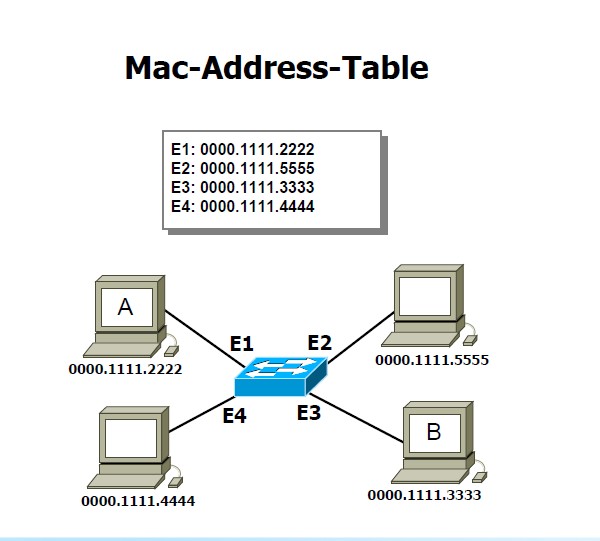

The two major options are dynamic routing and static routing – these are basically how routers learn about routes to destination networks. This means when a network topology is created, there has to be some kind of configuration for the devices on that network to communicate with each other.

The entire process of building this Routing Table relies on the information from neighboring routers (dynamic routes) or from statically configured entries by the network administrator (static routes).
#Cisco show mac address table how to
This Routing Table contains all known destination networks, how they were learned and how to reach them (outgoing Interface). Internet 172.16.1.5 1 “knowledge” that a Router has about the way to reach destination networks is stored in the “ Routing Table” of the device. Protocol Address Age (min) Hardware Addr Type Interface Total Mac Addresses for this criterion: 6
#Cisco show mac address table software
S01#sh ver | i IOSĬisco IOS Software, C3560 Software (C3560-IPBASEK9-M), Version 12.2(37)SE, RELEASE SOFTWARE (fc2) I am including some show commands from the switch, in case you have questions about the CLI for the SNMP commands above. Loading MIBs allows you to poll with an OID name, instead of the long dotted number. If you haven't loaded all Cisco's MIBs on your Ubuntu machine, then you should avoid using the -m flags in the snmpbulkwalk commands. I don't remember Ubuntu cleaning out /tmp, but to be safe I'd avoid storing things there. You should use your HOME directory in linux to store the file. CentOS) clean out the /tmp directory on a monthly basis. 1.3.6.1.2.1.3.1.1.2 > ~]$ cat /tmp/S01_ARP.txtĪs you see above, you can use cat in linux to get all output from a text file. We're delving into areas that go outside the normal scope of this site, but to save the ARP table above to a file in /tmp/S01_ARP.txt, the you'd add > /tmp/S01_ARP.txt to the end of the snmpbulkwalk above. If you really want the ARP table from the switch, then you need to poll atPhysAddress. Keep in mind that Vlans 1002-1005 are internal Cisco Vlans that you should not poll. If you're not sure which vlans to poll on a switch, you can get that information from. Thus we know that all the mac-addresses on this switch were learned through FastEthernet 0/48 in vlan-10. BRIDGE-MIB does that with dot1dBasePortIfIndex. To translate that into a normal interface name, you have to map that to an ifName.

In the output above, 52 is the value of dot1dBasePort, which is a number the MIB uses to index the dot1dTp table. In my example below, the switch at 172.16.1.210 is configured with snmp-server community public ro, and I'm polling the mac-address table in vlan-10 with dot1dTpFdbPort from BRIDGE-MIB. each vlan you poll needs a different community. If you really want the mac-address table from the switch, then remember you have to change the community string you poll with. I wish polling with SNMP wasn't as complicated. I apologize in advance for the length of this answer. you just need to remove the -m option in the commands if you don't have the MIBs loaded locally. Some of my examples assume you have the MIBs loaded on your server. please let me know if you need pointers for doing this (see this question for hints about loading MIBs in linux). I am assuming you know how to login to your Ubuntu server, and that NET-SNMP is installed. 1.3.6.1.2.1.17.4.3.1.2 however, that OID actually is for the mac-address table in the switch. you are asking about ARP tables, and you're using OID.


 0 kommentar(er)
0 kommentar(er)
